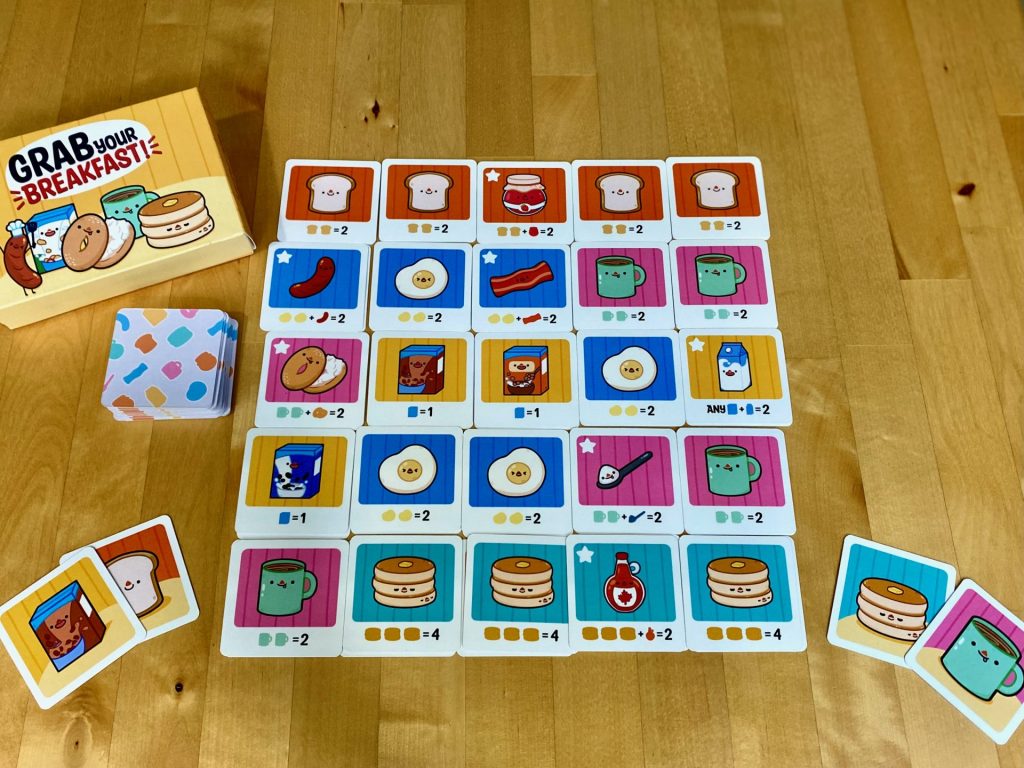
In this newest title by Ameba Games, Lim Ming Liang set out to create a game to introduce kids to a simple set collecting mechanic. During his own game sessions, Ming noticed that the kids were left out when the big gun titles were brought out so he created this game for game loving parents and friends looking for an easy filler.
Set Up
Shuffle the 50 breakfast item table cards and lay them in a 5 by 5 square array. Then stack the remaining 25 cards on top of the first array. Shuffle the hand cards and deal 2 to each player. Lay the rest down in a face down pile. You’re ready to start!

Game Play
The objective of the game is to gain the most points by collecting as many sets of breakfast items and their bonus accompaniments.
However you choose to start, players take one action per turn. They may choose to match one hand card with 1 breakfast tile or exchange their hand for another 2 cards if there are no matching breakfast tiles.
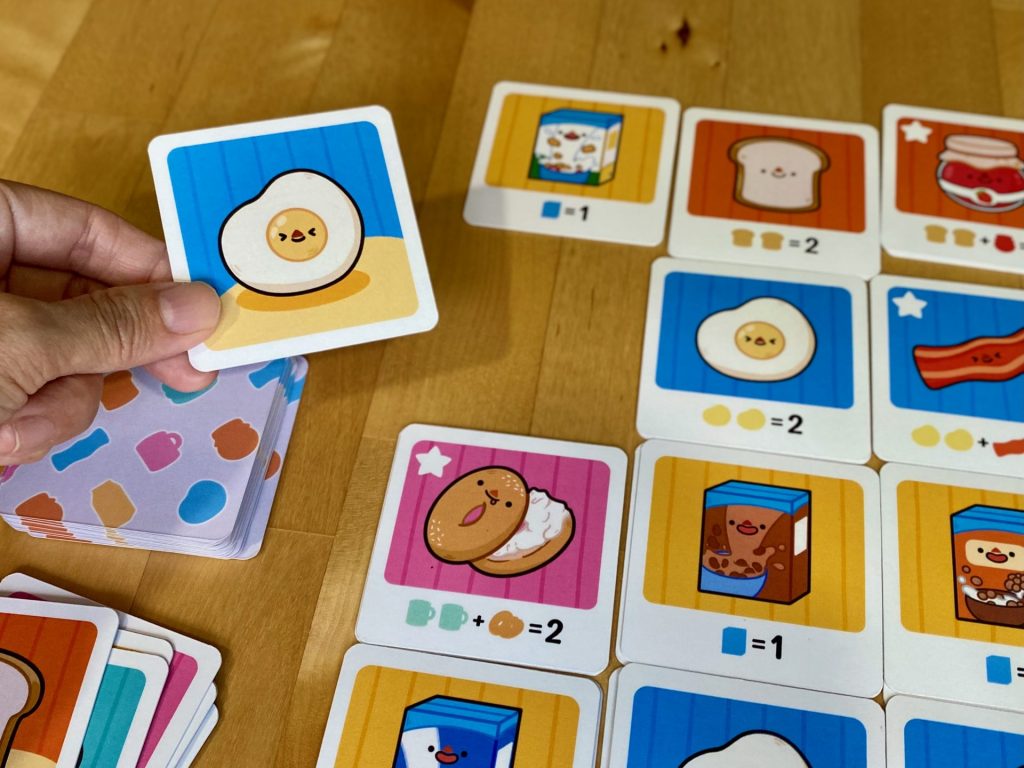
Players take turns to match hand tiles to the top layer of breakfast tiles, from either ends of the row. Matched cards are then placed in a discard pile to the side. Since the array is made up of 2 stacks of cards, breakfast tiles on top must be matched before the tiles below are made available. Tiles of the same layer can only be drawn from the outermost side of each row. As tiles from either side are drafted, the available cards will draw nearer to the center.
Players may also choose to discard any 1 card in hand in exchange for a bonus tile card that is available from the array as long as they comply with the above matching rule. In the event that no breakfast tiles or bonus tiles can be matched, players may discard their hand for another pair of cards. When exhausted, the draw pile can be refreshed by reshuffling discarded cards.
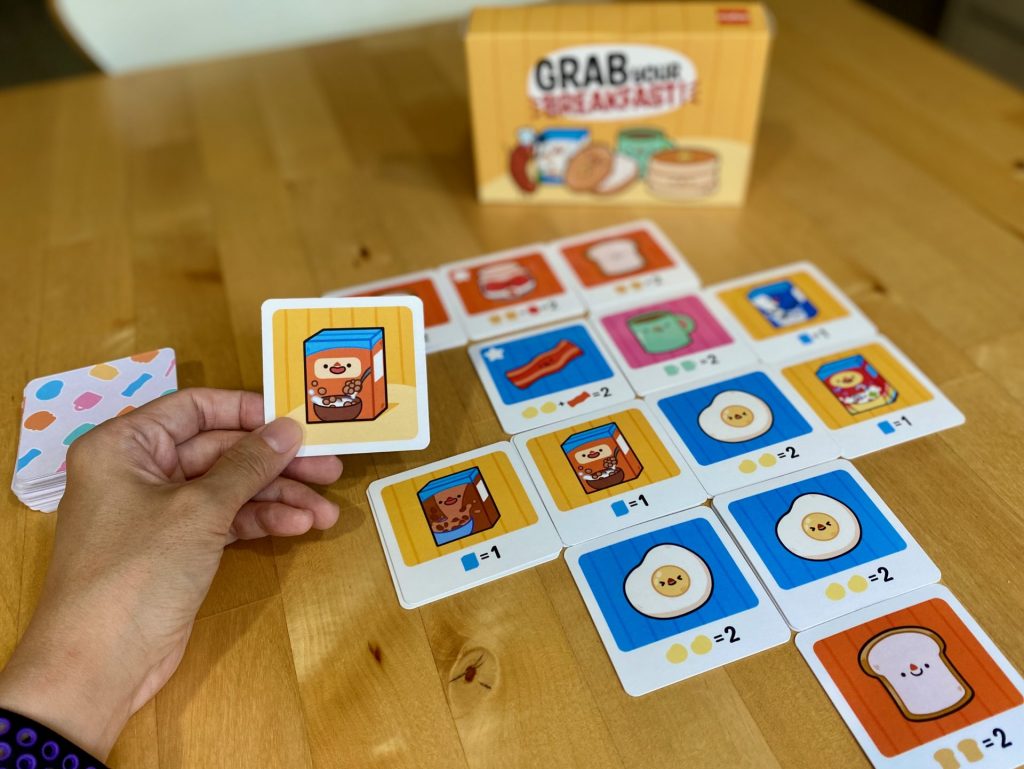
The end game mechanics are stilted when it comes down to the last card or two. At that point, most players have completed the sets they had planned for. Cards left in play then tended to be single cereal cards, bonus cards without matching sets or unwanted halves of pairs. Nobody really wants those cards because if not homed into a set, a penalty of 1 point per card is deducted against your final score. So players were just drawing and discarding cards to find the lonesome match in order to trigger the end game.
Scoring is straightforward; points are awarded for complete sets and any bonus cards complimentary to that set. For example, two toast tiles score 2 points, and an additional 2 points are awarded if the set is accompanied by a Jam tile. And, there are conditional bonuses to gain as well to encourage players to collect as many varied sets as possible.

Final Thoughts
This is a light-hearted matching game that kids will find easy to play. The artwork is cute and no reading is required, so even the very little ones can play. The rules for how to match can seem unnecessarily complicated, but once that is out of the way, the game is simple to play. The kids enjoyed keeping opponents at bay by selecting the right cards to block other players as well as the puzzle-y nature of maximizing their sets with bonus cards.
If you have an ongoing game night crew, Grab Your Breakfast is probably too simple to even qualify as a filler for your regulars. But I can see it working out for a bunch of friends wanting to play a quick game while they hang out. As for the family audience, my well experienced eight year old found this game too simple for her and my artistic six year old entertained me because she found the artwork cute. I would say the best bet for Grab Your Breakfast is as a family game for the preschool kid between the ranges of 3 to 5 years old. As for me, I’ll be happily passing it on to our preschool and lower elementary school game library.


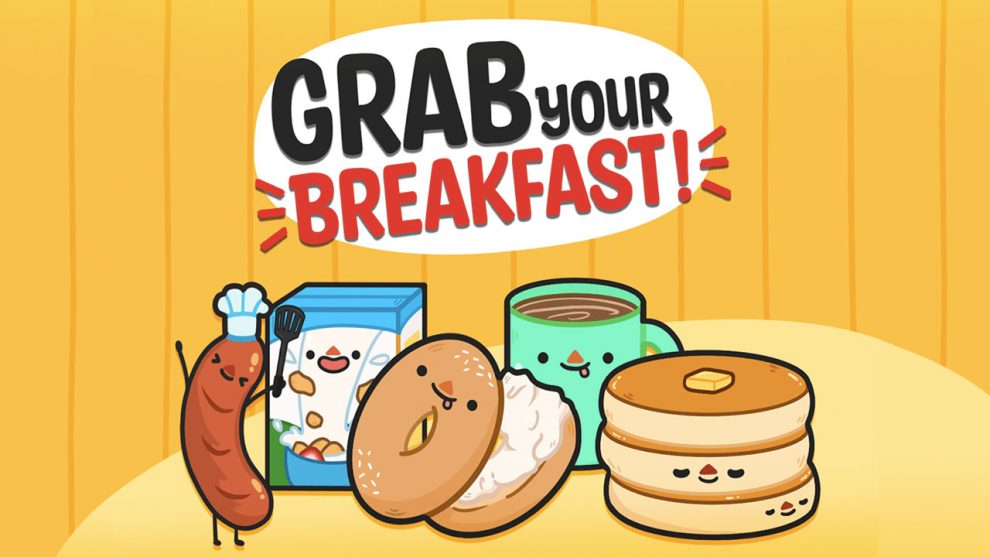



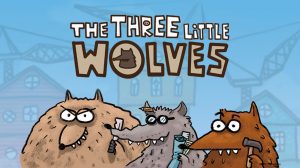




Add Comment